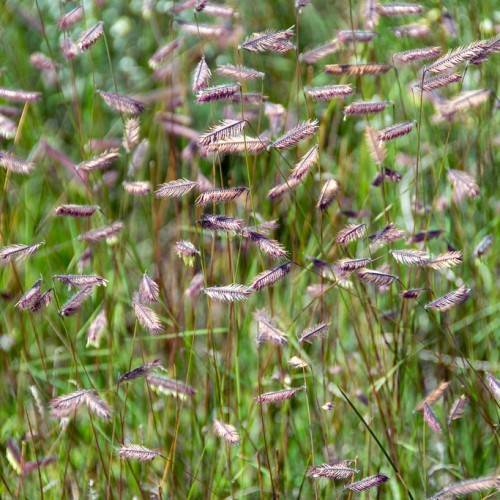
Hairy Grama
Bouteloua hirsuta
Also Known As - Hairy GrammaWatering:
Average
Hardiness Zone:
Sun:
full sun,part shade
Leaf:
Yes
Growth Rate:
Low
Drought Tolerant:
Yes
Salt Tolerant:
Yes
Thorny:
Yes
Care Level:
Low
watering
Sideoats Grama should typically be watered during the summer season when the top 1-2 inches of soil is dry. During the hot summer season, Sideoats Grama should be watered 2 to 3 times per week. It is important to water the plants deeply to ensure the roots receive the moisture. Each plant should receive about 1-2 inches of water each time. During the fall and winter, Sideoats Grama should only be watered when the soil becomes dry, which can be once or twice a month depending on the amount of rainfall.
sunlight
Sideoats Grama (Bouteloua curtipendula var. curtipendula) is a plant species that prefers full sun, meaning it does best when it receives at least 6 hours of direct sunlight per day. As a warm-season grass, its foliage develops in late spring or early summer and will stay green until fall when temperatures drop again. During the hottest days of summer, it tolerates a little afternoon shade to prevent scorching of its leaves. Avoid shady spots that are too dense, as they don't provide enough middle-ground sunlight for optimal growth.
pruning
Sideoats Grama is best pruned in the late spring or early summer. Pruning should be done to maintain a desired height and to remove any dead or injured stems. Generally, no more than 1/4 of the grass should be removed at 1 pruning. For a more formal look, up to 1/3 of the grass can be removed. Take care to avoid pruning in the late summer and early fall to prevent dormancy during the cold winter. Prune the grass slightly above the ground with hedge clippers or shears.
